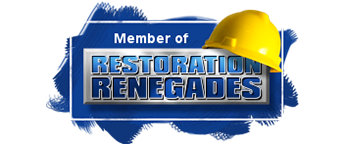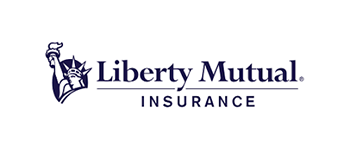EXPANDED FUNGAL REPORT
Prepared Exclusively For PDQ Restoration 302 Boonton Avenue Boonton, NJ 07005
Phone:973-316-6014
Report Date: Project:
EMSL Order: 11/20/2024 240531-WTR / XXXXX 052405593
TM AIHA LAP, LLC. AIHA LAP, LLCEMLAP #167035
This report has been prepared by EMSL Analytical, Inc. at the request of and for the exclusive use of the client named in this report. Completely read the important terms, conditions, and limitations that apply to this report.
Test Report EXMold-2.1.0.0 Printed: 11/20/2024 04:56:14PM
Attn: Nart Bachok
PDQ Restoration 302 Boonton Avenue Boonton, NJ 07005
Collected: 052405593 PDQR42 11/20/2024 11/20/2024
1.Description of Analysis
Analytical Laboratory
EMSL Analytical, Inc. (EMSL) is a nationwide, full service, analytical testing laboratory network providing Asbestos, Mold, Indoor Air Quality, Microbiological, Environmental, Chemical, Forensic, Materials, Industrial Hygiene and Mechanical Testing services since 1981. Ranked as the premier independently owned environmental testing laboratory in the nation, EMSL puts analytical quality as its top priority. This quality is recognized by many well-respected federal, state and private accrediting agencies, and assured by our high quality personnel, including many Ph.D. microbiologists and mycologists.
EMSL is an independent laboratory that performed the analysis of these samples. EMSL did not conduct the sampling or site investigation for this report. The samples referenced herein were analyzed under strict quality control procedures using state-of-the-art microbiological methods. The analytical methods used and the data presented are scientifically and legally defensible.
The laboratory data is provided in compliance with ISO-IEC 17025 guidelines for the particular test(s) requested, including any associated limitations for the methods employed. These data are intended for use by professionals having knowledge of the testing methods necessary to interpret them accurately.
2.Analytical Results See attached data reports and charts.
Proj: 240531-WTR / XXXXX
Analyzed: 052405593 PDQR42 11/20/2024
Surface Contamination ASSESSMENT
Report Sample Information TM Tape Samples
Based on Direct Microscopic Analysis MICRO-SOP-200
Contamination Rating (Referenced in IICRC S520)
Recommended Remedial Action (Referenced in IICRC S520)
Lab Sample #: 1 052405593-0001
Office 1 / Wood Sil
Condition 3: Actual fungal growth
Remediate to a Condition 1 status
Lab Sample #: 052405593-0002
Office 1 Drywall
Condition 3: Actual fungal growth
Remediate to a Condition 1 status
Definitions (from IICRC S520 Standard)
Condition 1 (normal fungal ecology): an indoor environment that may have settled spores, fragments, or traces of actual growth.
Condition 2 (settled spores): an indoor environment which is primarily contaminated with settled spores that were dispersed directly or indirectly from a Condition 3 area, and which may have traces of actual growth.
Condition 3 (actual growth): an indoor environment contaminated with the presence of actual mold growth and associated spores. Actual growth includes growth that is active or dormant, visible or hidden.
Test Report: Microscopic Examination of Fungal Spores, Fungal Structures, Hyphae, and Other Particulates from Tape Samples (EMSL Method MICRO-SOP-200)
Sample Location:
- 052405593-0001
- 052405593-0002
Spore Types Category
- Alternaria (Ulocladium)----
- Ascospores----
- Aspergillus/Penicillium++----
- Basidiospores----
- Bipolaris++----
- Chaetomium++----
- Cladosporium----
- Curvularia----
- Epicoccum----
- Fusarium++----
- Ganoderma----
- Myxomycetes++----
- Pithomyces++----
- Rust----
- Scopulariopsis/Microascus----
- Stachybotrys/Memnoniella Low *High*--
- Unidentifiable Spores----
- Zygomycetes----
- Ascotricha *High*----
- Aspergillus-*Medium*--
- Bispora *High*----
- Monodictys Rare----
- Hyphal Fragment----
- Insect Fragment Rare----
- Pollen----
- Fibrous Particulate----
Understanding the Results
EMSL Analytical, Inc. is an independent laboratory, providing unbiased and scientifically valid results. These data represent only a portion of an overall IAQ investigation. Visual information and environmental conditions measured during the site assessment (humidity, moisture readings, etc.) are crucial to any final interpretation of the results. Many factors impact the final results; therefore, result interpretation should only be conducted by qualified individuals. The American Conference of Governmental Industrial Hygienists (ACGIH) has published a good reference book covering sampling and data interpretation. It is entitled, Bioaerosols: Assessment and Control, 1999.
Fungal spores are found everywhere. Whether or not symptoms develop in people exposed to fungi depends on the nature of the fungal material (e.g., allergenic, toxic, or infectious), the exposure level, and the susceptibility of exposed persons. Susceptibility varies with the genetic predisposition (e.g., allergic reactions do not always occur in all individuals), age, pre-existing medical conditions (e.g., diabetes, cancer, or chronic lung conditions), use of immunosuppressive drugs, and concurrent exposures. These reasons make it difficult to identify dose/response relationships that are required to establish “safe” or “unsafe” levels (i.e., permissible exposure limits).
It is generally accepted in the industry that indoor fungal growth is undesirable and inappropriate, necessitating removal or other appropriate remedial actions. The New York City guidelines and EPA guidelines for mold remediation in schools and commercial buildings define the conditions warranting mold remediation. Always remember that water is the key. Preventing water damage or water condensation will prevent mold growth.
This report is not intended to provide medical advice or advice concerning the relative safety of an occupied space. Always consult an occupational or environmental health physician who has experience addressing indoor air contaminants if you have any questions.
Glossary of Fungi
ASCOTRICHA
Natural Habitat: Decaying wood, Soil
Suitable Substrates in the Indoor Environment: Wet sheetrock, Straw, Wood
Allergic Potential: Unknown
P otential Opportunist or Pathogen: The teleomorph of Dicyma ampullifera (Ascotricha chartarum) is associated with maxillary sinusitis.
Potential Toxins Produced: Unknown
ASPERGILLUS
Natural Habitat: Soil and Plant debris.
Suitable Substrates in the Indoor Environment: Grows on a wide range of substrates indoors. Prevalent in water damaged buildings
Water Activity: Aw=0.75-0.94
Mode of Dissemination: Wind
Allergic Potential: Allergic bronchopulmonary aspergillosis (ABPA) which is common in asthmatic and cystic fibrosis patients. Aspergillus sinusitis. Invasive aspergillosis in immunocompromised patients
Potential or Opportunistic: Aspergilloma and chronic pulmonary aspergillosis in people with lung disease.
Potential Toxins Produced: Pathogens A.sojae is used for fermented food and beverages in Asia. A. oryzae is used in soy sauce production. A. terreus produces mevinolin which is able reduce blood cholesterol. A. niger produces enzymes used to make some breads and beers and is also used in plastic decomposition. A. niger and A. ochraceus are used in cortisone production Industrial Uses 3-Nitropropionic acid, 5-metoxystermatocystin, Aflatoxin B1, B2, Aflatoxin G1, G2, Aflatoxin M1, M2, Aflatoxin P1, Aflatoxin Q1, Aflatoxins, Aflatrem (alkaloid), Aflatrem (indole alkaloid), Aflavinin, Ascalidol, Aspergillic acid, Aspergillomarasmin, Aspertoxin, Asteltoxin, Austamid, Austdiol, Austins, Austocystins, Avenaciolide, Brevianamide A, Candidulin, Citreoviridin,, Citrinin, Clavatol, Cyclopiazonic acid, Cyclopiazonic acid, Cytochalasin E, Emodin, Fumagillin, Fumigaclavine A, Fumigatin, Fumitremorgens, Fumitremorgin A, Gliotoxin, Griseofulvin, Helvolic acid, Kojic acid, Kotanin, Malformins, Naphtopyrones, Neoaspergillic acid, Nidulin, Nidulotoxin, Nigragillin, Ochratoxin A, Ochratoxin B, Ochratoxin C, Ochratoxins ß, Ochratoxins a, Ochratoxins (A,B,C.a, ß.), Orlandin, Oryzacidin, Paspaline, Patulin, Penicillic acid, Phthioic acid, Secalonic acid A, B, D and F, Sphingofungins, Spinulosin, Sterigmatocystin, Terphenyllin, Terredional, Terreic acid, Terrein, Terretonin, Terretonin, Territrem A, Tryptoquivalines, Verruculogen, Versicolorin A, Viomellein, Viriditoxin, Xanthocillin, Xanthomegnin, ß-nitropropionic acid.
Other Comments: It is the second most common opportunistic pathogen following Candida.
BISPORA
Natural Habitat: Saprophyte, found on decaying wood. Bispora betulina is found in buildings on wood in wet areas.
Suitable Substrates in the Indoor Environment: Wet areas on dead wood
Water Activity: Unknown
Mode of Dissemination: Unknown
Allergic Potential: Unknown
Potential or Opportunistic Pathogens: Unknown
MONODICTYS
Natural Habitat: Rotten wood, dead stems, damp linoleum, paper, soil composites
Suitable Substrates in the Indoor Environment: Water damaged wood, organic substrates
Free moisture required for mold growth: Unknown
Mode of Dissemination: Unknown
Allergic Potential: Unknown
Potential or Opportunistic Pathogens: Unknown
STACHYBOTRYS/MEMNONIELLA (AKA BLACK MOLD)
Natural Habitat: Decaying plant materials and Soil.
Suitable Substrates in the Indoor Environment: Water damaged building materials such as: ceiling tiles, gypsum board, insulation backing, sheet rock, and wall paper. Paper. Textiles.
Water Activity: Aw=0.94
Mode of Dissemination: Insects, Water, and Wind
Allergic Potential: Type I (hay fever, asthma)
Potential or Opportunistic Pathogens: Unknown
Industrial Uses: Unknown
Potential Toxins Produced: Mycotoxins produced by Stachybotrys include Roridin A, Roridin E, Roridin H, Roridin L-2, Satratoxin G, Satratoxin H, Isosatratoxin F, Verucarin A, Verucarin J, and Verrucariol.
Other Comments: Stachybotrys and Memnoniella are closely related and many Memnoniella species have been renamed under Stachybotrys. Mycologists are continuing to debate whether Stachybotrys and Memnoniella should be grouped or split apart (see references below). Stachybotrys may play a role in the development of sick building syndrome. The presence of this fungus can be significant due to its ability to produce mycotoxins. Exposure to the toxins can occur through inhalation, ingestion, or skin exposure.
References: Generic hyper-diversity in Stachybotriaceae. L. Lombard et al., Persoonia 36, 2016: 156–246. Overview of Stachybotrys (Memnoniella) and current species status. Y. Wang et al., Fungal Diversity, 2015: DOI: 10.1007/s13225-014-0319-0.
References and Informational Links
Books
- Bioaerosols: Assessment and Control. Janet Macher, Ed., American Conference of Governmental Industrial Hygienists, Cincinnati, OH 1999.
- Exposure Guidelines for Residential Indoor Air Quality. Environmental Health Directorate, Health Protection Branch, Health Canada, Ottawa, Ontario, 1989.
- Fungal Contamination in Public Buildings: Health Effects and Investigation Methods. Health Canada, Ottawa, Ontario, 2004.
- IICRC: S500 Standard and Reference Guide for Professional Water Damage Restoration. 3rd Edition, Institute of Inspection, Cleaning, and Restoration Certification, Vancouver, WA
- 2006 IICRC: S520 Standard and Reference Guide for Professional Mold Remediation. 1st Edition, Institute of Inspection, Cleaning, and Restoration Certification, Vancouver, WA, 2004
- Field Guide for the Determination of Biological Contaminants in Environmental Samples. 2nd Edition, American Industrial Hygiene Association, 2005.
Consumer Links
Read the full text of AIHA’s "The Facts About Mold" consumer brochure. https://aiha-assets.sfo2.digitaloceanspaces.com/AIHA/resources/Facts-About-Mold-A-Consu mer-Focus-Fact-Sheet.pdf
The Occupational Safety and Health Administration (OSHA) http://www.osha.gov/SLTC/molds/index.html
CDC Mold Facts https://www.cdc.gov/mold-health/about/index.html?
CDC_AAref_Val=https://www.cdc.gov/mold/faqs.htm
CDC Stachybotrys - Questions and answers on Stachybotrys chartarum and other molds https://www.cdc.gov/mold-health/data-research/facts-stats/CDC_AAref_Val=https://www.cdc.gov/mold/stachy.htm
IOM, NAS: Clearing the Air: Asthma and Indoor Air Exposures https://www.epa.gov/indoor-air-quality-iaq/should-you-have-air-ducts-your-home-cleaned
National Library of Medicine-Mold website http://www.nlm.nih.gov/medlineplus/molds.html
California Department of Health Services (CADOHS) https://www.cdph.ca.gov/Programs/cls/dehl/ehl/Pages/AQS/Mold.aspx
Minnesota Department of Health https://www.health.state.mn.us/communities/environment/air/mold/index.html
New York City Department of Health and Mental Hygiene https://www.nyc.gov/site/doh/health/health-topics/mold.page
EPA
"Should You Have the Air Ducts in Your Home Cleaned?" https://www.epa.gov/indoor-air-quality-iaq/should-you-have-air-ducts-your-home-cleaned
General information about molds and actions that can be taken to clean up or prevent a mold problem. https://www.epa.gov/mold/mold-cleanup-your-home
“A Brief Guide to Mold, Moisture, and Your Home” - Includes basic information on mold, cleanup guidelines, and moisture and mold prevention https://www.epa.gov/mold/brief-guide-mold-moisture-and-your-home
“Mold Remediation in Schools and Commercial Buildings” - Information on remediation in schools and commercial property, references for potential mold and moisture remediators. https://www.epa.gov/mold/mold-remediation-schools-and-commercial-buildings-guide
FEMA
“Homes That Were Flooded May Harbor Mold Problems” - Information and tips for cleaning mold. https://www.fema.gov/press-release/20210318/fact-sheet-mold-problems-and-solutions
“Dealing With Mold & Mildew in Your Flood Damaged Home. http://www.fema.gov/pdf/rebuild/recover/fema_mold_brochure_english.pdf
Important Terms, Conditions, and Limitations
Sample Retention
Samples analyzed by EMSL will be retained for 60 days after analysis date Storage beyond this period is available for a fee with written request prior to the initial 30 day period. Samples containing hazardous/toxic substances which require special handling will be returned to the client immediately. EMSLreserves the right to charge a sample disposal fee or return samples to the client.
Change Orders and Cancellation All changes in the scope of work or turnaround time requested by the client after sample acceptance must be made in writing and confirmed in writing by EMSL. If requested changes result in a change in cost the client must accept payment responsibility. In the event work is cancelled by a client, EMSL will complete work in progress and invoice for work completed to the point of cancellation notice. EMSL is not responsible for. holding times that are exceeded due to such changes.
Warranty EMSL warrants to its clients that all services provided hereunder shall be performed in accordance with established and recognized analytical testing procedures and with reasonable care in accordance with applicable federal, state and local laws. The foregoing express warranty is exclusive and is given in lieu of all other warranties, expressed or implied. EMSL disclaims any other warranties, express or implied, including a warranty of fitness for particular purpose and warranty of merchantability.
Limits of Liability In no event shall EMSL be liable for indirect, special, consequential, or incidental damages, including, but not limited to, damages for loss of profit or goodwill regardless of the negligence (either sole or concurrent) of EMSL and whether EMSL has been informed of the possibility of such damages, arising out of or in connection with EMSL’s services thereunder or the delivery, use, reliance upon or interpretation of test results by client or any third party. We accept no legal responsibility for the purposes for which the client uses the test results. EMSL will not be held responsible for the improper selection of sampling devices even if we supply the device to the user. The user of the sampling device has the sole responsibility to select the proper sampler and sampling conditions to insure that a valid sample is taken for analysis. Any resampling performed will be at the sole discretion of EMSL, the cost of which shall be limited to the reasonable value of the original sample delivery group (SDG) samples. In no event shall EMSL be liable to a client or any third party, whether based upon theories of tort, contract or any other legal or equitable theory, in excess of the amount paid to EMSL by client thereunder.
Indemnification Client shall indemnify EMSL and its officers, directors and employees and hold each of them harmless for any liability, expense or cost, including reasonable attorney’s fees, incurred by reason of any third party claim in connection with EMSL services, the test result data or its use by client
















